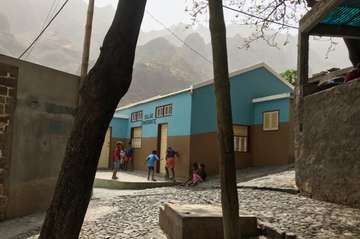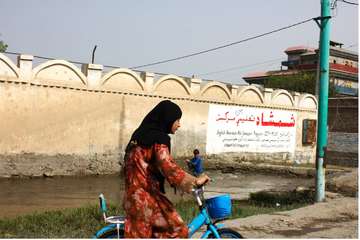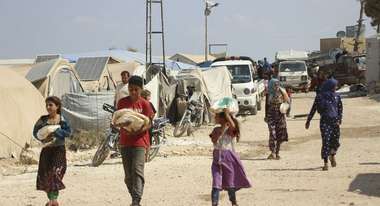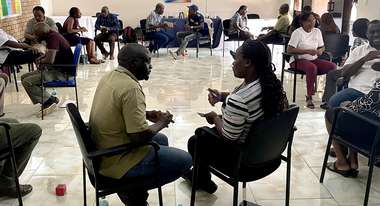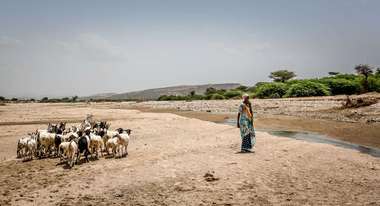New Insights into the Causes of Migration: The Importance of Good Governance
The causes of migration are manyfold. Development policy trying to counter it fails to take into account corruption as a key driver. Belief in a better future is important.
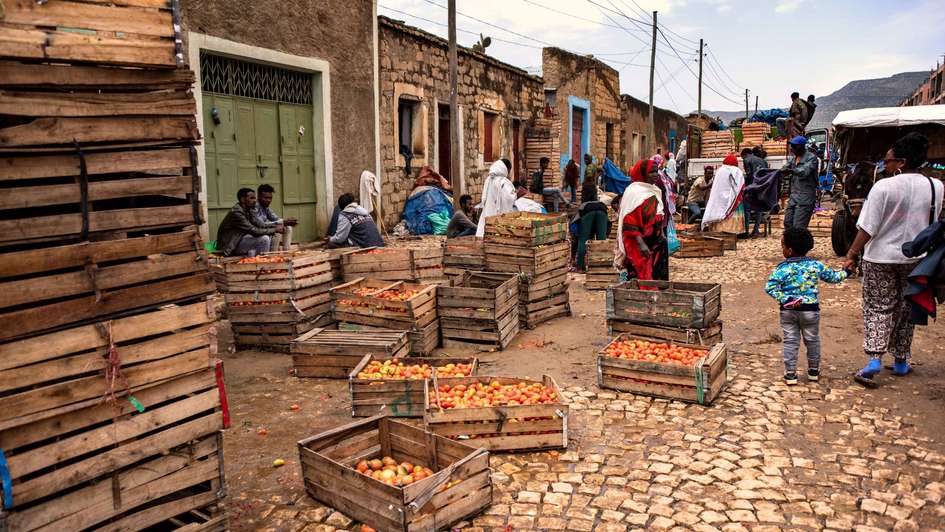
Addressing the "root-causes of migration" has become a central strategy for the European Union (EU) and its member states to manage migration movements, motivated by the widespread belief that poverty, conflict and environmental degradation are primary drivers of migration and displacement. It implies a win-win situation: improving lives in countries of origin will lower migration aspirations and reduce irregular migration.
One of the significant policy measures implemented towards this goal was the "European Union Emergency Trust Fund for stability and addressing root causes of irregular migration and displaced persons in Africa" (EUTF). This focus has been re-iterated in the new "Neighbourhood, Development and International Cooperation Instrument – Global Europe" adopted in 2021.
However, managing migration through development aid is unlikely to work because "root causes" make up only part of the drivers, and even have contradictory impacts on migration. Beyond political narratives, what do we know about how conditions in countries of the Global South actually impact migration processes? And which are the most important ones that could be addressed by development cooperation?
In the EU-funded MIGNEX project, over 13'000 young adults across 26 communities in Africa, Asia and the Middle East were asked about local migration and development dynamics. The insights produced by this extensive data reveal the potential and limits of policy in addressing the causes of migration and that corruption is one of the most important drivers of migration aspirations.
Numerous Terms Describe the Causes of Migration
Understanding why and under what circumstances people migrate is one of the oldest questions in migration studies. One of the challenges in making sense of this large body of literature is the varied and inconsistent terminology, with terms such as "drivers", "push factors", "determinants" and "causes" used seemingly interchangeably.
Determinants of migration are generally factors that predict migration but do not represent specific causes of migration (de Haas 2011). For example, in most contexts, men are more likely to migrate, but being male is not a cause of migration.
More specifically, drivers of migration are "forces leading to the inception of migration and the perpetuation of movement" (Van Hear et al. 2018). This underscores that migration drivers potentially have a causal influence on migration. Examples include transnational networks and employment opportunities at the destination.
Root causes of migration can be a meaningful label for some drivers of migration, when they are "widely experienced hardships, to which migration is a possible response, that are perceived to be persistent, immediately threatening, or both" (Hagen-Zanker and Carling 2023).
This definition spans the problematic divide between "forced" and "voluntary" migration and covers various forms of hardship which are important to address to improve people’s lives, regardless of the effects on migration. Whether such hardships result in migration depends on a range of other considerations, including migrant networks and policy-related obstacles and opportunities.
Why the "Root-Cause Approach" is Flawed
It is important to bear in mind that the causes of migration can be spread out along a stepwise process, starting with the formation of migration aspirations and their subsequent conversion into actual migration. In other words, people first make up their mind about migrating, and then, if wishing to migrate, attempt to carry it through — which they may or may not succeed in doing. This allows for a better understanding of how migration works, especially in a world with widespread barriers to mobility.
Besides border and immigration policy, poverty can be such a barrier. Intuitively, one would expect that poorer people are more likely to want to migrate and that there is higher migration out of poorer areas. Yet, in practice, poverty plays the opposite role. Rsearch shows that those living in poorer areas are 48% less likely to foster migration aspirations than those living in better-off areas (Carling et al. 2024).
One explanation for this pattern is that poorer people may feel more constrained in their choices, so they are less likely to even consider migrating. Furthermore, migration is often a costly enterprise, especially when it involves crossing international borders. Therefore, poverty does not necessarily impact whether people want to migrate, but whether they can.
While poverty reduction is important in its own right, it is unlikely that it will have an immediate effect on migration. Addressing other drivers – such as scarce livelihoods and a lack of good jobs – might be more effective, but it takes a long time for conditions in countries of origin to improve to a level where international migration is no longer desirable (Vargas-Silva et al. 2023).
No ‘One-Size-Fits-All’: The Importance of Local Context
Few drivers universally affect the wish to migrate in the same way. While a certain factor may increase migration aspirations in one community, it can lower them in others. This means that it is futile to assume that certain policy interventions can be implemented across diverse contexts and produce the same results.
For example, the effect of unemployment varies across communities. In some, such as Kilis in Turkey, unemployed people are more likely to want to migrate, while in others, such as Chot Dheeran in Pakistan, they are less likely to want to do so. That is because many contextual factors interact and jointly influence migration processes. Often, sociocultural considerations play a larger role than is commonly assumed, with a "culture of migration" and transnational networks being the most important facilitating factors (Czaika and Weisner 2023).
Also, perceptions matter greatly. Concretely, those perceiving that it is hard to make a living and feed a family or that it is difficult to find a good job are 9% more likely to have migration aspirations. By contrast, actually being unemployed is only weakly associated with having migration aspirations (Carling et al. 2024). This finding is at odds with the prominent emphasis on job-creation in policy interventions.
Migration decisions are therefore influenced by people’s assessment of their current circumstances and their prospects for the future. Even if people are struggling, they might endure if they see better times ahead. Conversely, a feeling of ‘futurelessness’ can be deeply frustrating and produce a desire for a change of course (Anđić 2020). Responding to current dissatisfaction can take several forms, but notably people’s higher levels of trust in society make it more likely that they try to address their grievances locally, rather than by wanting to migrate (Carling et al. 2023b).
Corruption as an Underlying Driver of Migration
Among the many drivers of migration, corruption and perceptions of poor governance are remarkably important because they contribute to different dimensions of ‘futurelessness’. That is because corruption is typically a symptom of deeper and less visible institutional and societal challenges. For instance, corruption in hospitals, schools, and police forces can be a sign of low pay, inadequate management, and a lack of accountability.
Corruption also has diverse and far-reaching consequences. First, it might be a direct drain on people’s finances, for instance when bribes are required for nominally free services. Second, corruption can be an impediment to creating a better life for oneself. For example, in Redeyef, a declining mining town in Tunisia’s desert, high levels of corruption block many qualified young people from the most desirable jobs, contributing to an overwhelming sense of hopelessness.
Among the 26 MIGNEX research areas, people living in communities where being asked to pay a bribe for a service is a common practice are 36% more likely to have strong wishes to migrate (Carling et al. 2023a). Similarly, governance, public service provision and trust in institutions consistently explain widespread migration aspirations and large migration outflows – more so than poverty and livelihoods, environmental stresses, or insecurity and conflict (Czaika and Weisner 2023).
Therefore, corruption has indirect consequences that matter for migration. When public funds are diverted from their intended use or personal interests steer decision-making in institutions, it harms development but does not make corruption a direct driver of migration aspirations. If corruption is largely obscured and people experience the effects in the form of decaying infrastructure and low-quality public services, for instance, then it is these deficiencies that are the drivers of migration.
Especially in contexts of low or medium levels of poverty, the role of corruption and distrust in institutions reveals how strongly corruption can stifle people’s faith in creating local futures.
Development Aid and Migration Control
Corruption is an important migration driver because it is not merely a nuisance and an obstacle to development but often reflects a deeper sense of societal dysfunction and hopelessness. Therefore, investing more in good governance initiatives and strengthening civil society is a vital opportunity for development cooperation to improve local conditions and strengthen people’s confidence to build their futures locally.
Still, only a small fraction of EUTF funding was dedicated to investment in governance, public services and institutions with the majority flowing into border and migration management projects. In fact, funds have been shown to exacerbate poor governance and corruption (Boersma et al., 2020). Cooperation with non-EU countries on migration and border management might therefore have counterproductive effects if it supports authoritarian regimes or does not address human rights abuses.
Critically, migration is shaped by many factors, with the "root causes", as conceived in current policy approaches, constituting only some of the drivers of migration. Development initiatives should remain focused on reducing hardships and enhancing the well-being of all, not just those seen as potential migrants (Weisner and Pope 2023). Ultimately, migration is not only driven by hardships but also by desires for learning, experience and personal growth, and can therefore in itself have positive effects on development.

References
Anđić T. (2020) Futurelessness, migration, or a lucky break: narrative tropes of the ‘blocked future’ among Serbian high school students. Journal of Youth Studies, 23(4):430-446.
Carling, J., Hagen-Zanker, J. and Weisner, Z. (2024) New insights on the causes of migration. MIGNEX Report. Oslo: Peace Research Institute Oslo. Available at mignex.org/d067.
Carling J., Caso N., Hagen-Zanker J., Rubio M. (2023a) The multi-level determination of migration processes. MIGNEX Background Paper. Oslo: Peace Research Institute Oslo. Available at mignex.org/d061.
Carling, J., Caso, N., Hagen-Zanker, J and Vagas-Silva, C. (2023b) Migration and alternative responses to dissatisfaction. MIGNEX Background Paper. Oslo: Peace Research Institute Oslo. Available at mignex.org/d062.
Czaika M., Weisner Z. (2023) A qualitative comparative analysis of the determination of migration processes. MIGNEX Background Paper. Oslo: Peace Research Institute Oslo. Available at mignex.org/d064.
de Haas H. (2011) The determinants of international migration: conceptualising policy, origin and destination effects. IMI Working Paper Series 32. Amsterdam: International Migration Institute. www.migrationinstitute.org/publications/wp-32-11.
Hagen-Zanker, J. and Carling, J. (2023) What are the ‘root causes’ of migration? MIGNEX Policy Brief. Oslo: Peace Research Institute Oslo. Available at mignex.org/d066a.
Van Hear N., Bakewell O., Long K. (2018) Push-pull plus: reconsidering the drivers of migration. Journal of Ethnic and Migration Studies 44:927–944.
Vargas-Silva C., Hagen-Zanker J., Carling J., Ignacio Carrasco J., Czaika M, Godin M., Bivand Erdal M. (2023) Tackling the root causes of migration. MIGNEX Background Paper. Oslo: Peace Research Institute Oslo. Available at mignex.org/d065.
Weisner Z. and Pope S. (2023) From development to deterrence? Migration spending under the EU Neighbourhood Development and International Cooperation Instrument (NDICI). Oxfam Briefing Paper. https://policy-practice.oxfam.org/resources/from-development-to-deterrence-migration-spending-under-the-eu-neighbourhood-de-621536/.

